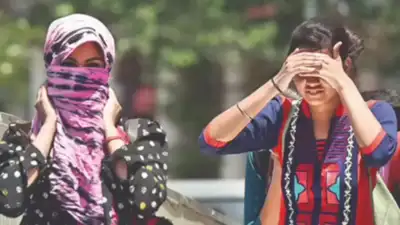Understanding Heatwaves in India: Causes, Impacts, and Trends

India Faces Intense Heatwave After a Wet May
After a rainy May, India is now experiencing a strong heatwave. This sudden change is typical before the monsoon. However, this year’s heatwave is especially harsh. Experts believe climate change is making these heatwaves more frequent and intense.
How Climate Change Affects Heatwaves
Climate change is causing more heatwaves. These heatwaves are also becoming more severe. The added humidity makes the heat more uncomfortable and dangerous. This is especially true for vulnerable communities. The current heatwave conditions clearly show this trend.
- Temperatures have risen above 44°C in Punjab, Haryana, Rajasthan, and Delhi.
- The India Meteorological Department (IMD) has issued a red alert for five days in a row since June 9.
- Rain and thundershowers in May delayed the heatwave. Now, dry and hot winds are causing extreme heat.
What Experts Say
Mahesh Palawat is the Vice President of Meteorology and Climate Change at Skymet Weather. He explains the situation:
“The monsoon arrived early but stalled after reaching Mumbai and the Northeast. The frequency of western disturbances has also reduced. Weak cyclonic circulations and continuous dry winds over the Indo-Gangetic plains are causing the heatwave. Hot winds from the Thar desert are spreading across the country. This is delaying the monsoon further.”
Health Risks of Heatwaves
The heatwave, combined with high humidity, poses serious health risks. Being exposed to extreme temperatures for a long time can cause heat strokes. This especially affects the poor, outdoor workers, children, and the elderly.
Global Warming and Heatwaves
KJ Ramesh is the former director general of IMD. He states:
“Climate change has made heatwaves more severe. Global warming has also increased humidity levels. This makes the heat more uncomfortable. The northern plains used to have dry weather. Now, they struggle with humid conditions. With every degree of warming, the air’s capacity to hold water vapor increases by 7%.”
Changing Patterns of Heatwaves
Heatwaves are now happening in places that were previously less affected. Studies show an increase in heatwave instances over North India from 1991 to 2020. Heatwave locations have shifted from central India to the southern region in the past decade.
Heatwave events are also increasing in the northwestern to central regions of India. This includes hilly states like Jammu and Kashmir, Himachal Pradesh, Uttarakhand, and parts of Ladakh. The northeastern states have also seen a rise in heatwave events since 1971.
Conclusion
The last two decades have been warmer globally. The weather conditions associated with high temperatures are changing. This includes instances of north-south wind discontinuity and recurring cyclonic storms over the Bay of Bengal. These changes disrupt the pressure distribution system. This results in persistent high temperatures leading to heatwaves.



